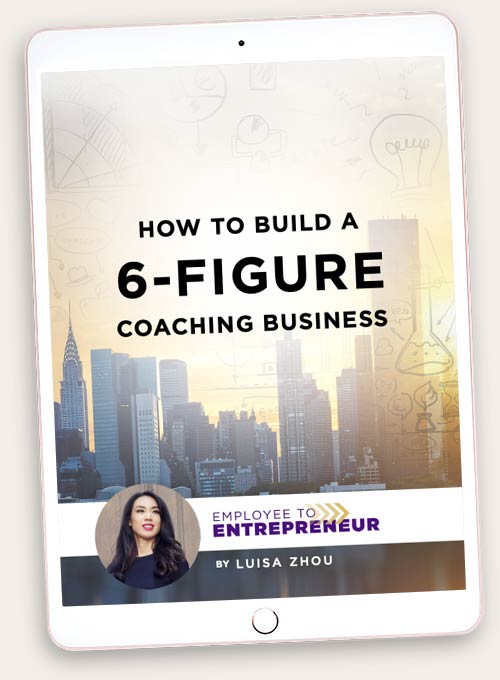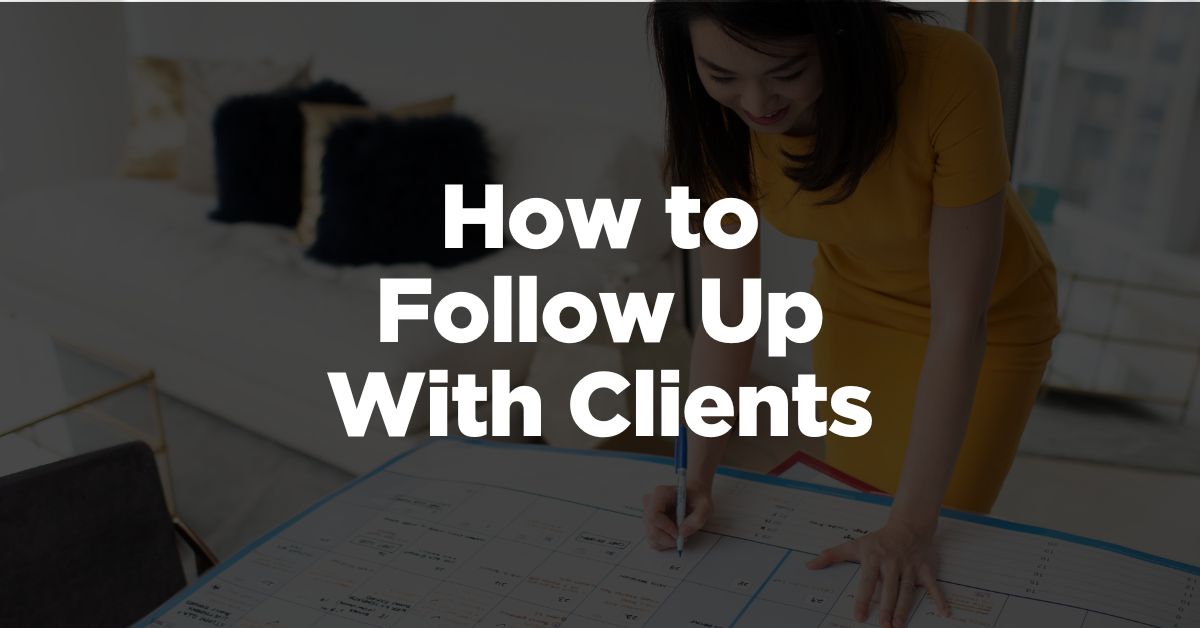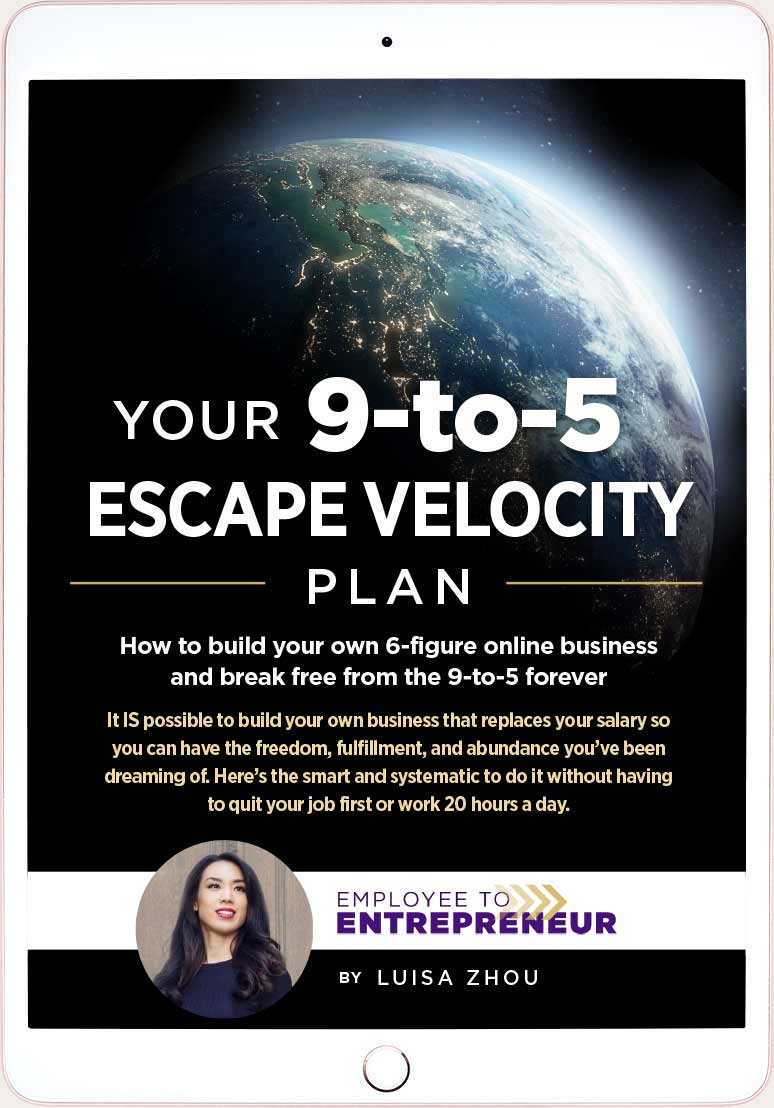When it comes to making sales, you need to master follow-ups.
Today, you’ll learn how to follow up with clients in a non-pushy way that gets clients to say “yes” to working with you.
Plus, I’ve included a proven follow-up email template you can use for your own business.
Ready to dive in?
Let’s go.
Prefer learning in video format? Then check out this video that I put together for you:
Why should you follow up with clients?
In sales, it’s all about following up.
Why?
Just about 2% of sales happen during the first contact. So, without a follow-up, you risk losing out on 98% of potential sales.
Now, when should you follow up?
Here are some specific situations when following up makes a LOT of sense. After:
- A discovery call
- Sending a proposal or a quote
- Sharing a trial or demo
- Networking events
- Someone watched your webinar, attended your workshop, or downloaded a free resource
- A previous client shows interest in renewing or upgrading their service
When it comes to following up, though, it’s good to reframe what it means.
Many think it’s about getting a quick ‘yes,’ but that’s not quite it.
Ultimately, that is the point, but remember that a potential client buys on THEIR schedule, not yours.
They might love your offer, but they’ll only bite when the timing is perfect for THEM.
Get the Ultimate Guide
for building a
6-Figure Coaching Business so you can achieve more freedom!
So, to make a sale, three things must align.
You need the right:
- Offer
- Person
- Timing
I’ve already covered creating the perfect offer and attracting your target audience.
Today, we’ll focus on number three: Timing.
That’s where follow-ups play an important role.
It’s what keeps you top-of-mind when that client is ready for your offer.
I’ll explain this in more detail below. But first, let’s look at how to schedule your follow-ups.
1. Schedule your next follow-up
During a sales call, you’re figuring out if you and a potential client are a match.
Make this conversation count and never leave it open-ended.
If they’re not sure yet, don’t just end the call. Set up a time for your next chat there and then.
The goal is to have them decide by that next call.
The key here is to be specific.
For example, if they need to chat with their team, don’t just say “I’ll call you soon.”
Instead, say something like, “Let’s talk again next Thursday at 10:30 AM, does that work for you?”
This way, you avoid the common mistake of being too vague about follow-ups.
You both know exactly when you’ll talk next, and they have a clear deadline to make up their mind.
This keeps the momentum going.
By scheduling the next call, you’ve got a timeline for a decision. But that’s just the beginning.
Next, let’s talk about why you shouldn’t give up too soon.
2. Don’t give up immediately
Not sure what to do when a client says “I’ll think about it”?
Here’s your next move.
Did you know that at any given time, only 3% of your market is actively buying? Another 56% aren’t ready yet, and 40% are just about to start.
Plus, about 63% of people who ask about your company today won’t buy for at least three months, and 20% will take over a year.
What does this mean for you?
If now isn’t a good time for a client to commit, don’t just forget about them.
Follow up later.
You see, a study by Brevet found two interesting facts:
- 92% of salespeople give up after four calls
- BUT 80% of prospects say no four times before they say yes
Do you spot the mismatch here?
I know it can be intimidating to follow up. You don’t want to seem pushy or needy.
What can help is to remember that the main reason prospects don’t get back to you isn’t a lack of interest — it’s because they’re simply busy.
Your job isn’t to worry about when they’ll be ready. (This is out of your control and therefore a total waste of time and energy.)
Instead, your focus should be on being top of mind for when they are ready.
Regular contact every few months builds trust and keeps you on their radar.
And when they’re ready to commit, you’re the first person they think of.
That said, don’t pester people with follow-ups, though.
The strategy here isn’t just to check in, but to engage meaningfully.
Each follow-up should offer value.
That’s what we’ll talk about next…
3. Send useful content to them
Ever read or post something and instantly think of a client?
That’s your cue to send it their way.
Here’s what you could say:
“Hi, I just recently released this. Based on what we talked about, I thought it might be useful for you. Hope you enjoy it. And if you need more help, let me know. I’d love to talk about it.”
It’s a simple call-to-action that lets the client know: When you’re ready, I’m here to help you out.
Now, how do you decide what to send?
Before hitting send, always ask yourself:
How useful is this for the person I’m sending it to?
Note: NOT how useful is this for ME — but how useful is this for THEM.
This means you need to be selective.
Because even if all of your content is valuable, you don’t want to bombard them with it.
Instead, stick to what’s relevant.
Focus on their challenges and offer solutions.
For instance, if they mentioned struggling with time management, an article with practical tips is perfect.
It shows you listen and understand their specific needs.
Nobody likes feeling sold to. But when your follow-ups are packed with value, people actually start looking forward to them.
They won’t feel like you’re just trying to sell them something.
They see that you care about building a mutually beneficial relationship, not just making a quick sale.
This makes them more interested in what you have to say (and offer).
Next, let’s see how your clients’ success stories can be a great follow-up tactic.
4. Share how you’ve helped other clients
Your clients’ success stories are powerful marketing tools.
But you can use them for follow-ups too.
Here’s what you can do:
Whenever you achieve a transformation or reach a milestone with one of your existing clients, pop your potential clients an email or message.
The text could be as simple as:
“I’ve helped another client of mine do something similar to your goals. When you’re ready to look at what we can do together, let me know and I’ll set up a call.”
Notice this message isn’t pushy or salesy.
It’s simply saying:
I helped this person achieve what you want to achieve. So, whenever you’re ready to make the same thing happen for you, I’m the person to help you.
Now, why is this technique so effective?
It taps into the power of social proof.
Social proof is our tendency to imitate the actions of others, especially when we’re unsure.
It’s a form of conformity.
In business, it can be like seeing others succeed and thinking, “If it worked for them, it might work for me too.”
That’s why testimonials are so powerful. They’re not just reviews — they’re real-life success stories that potential clients can relate to.
It’s an indirect way of proving, “I’ve helped others reach their goals, and I can do the same for you.”
This approach shifts your marketing from telling to showing.
More than talking about your skills, you’re showing potential clients what their future could look like with your help.
General testimonials are often less targeted. But here, you share the EXACT results that this prospect wants to achieve.
This makes it super powerful because it’s so relevant and specific.
Another great follow-up tactic is introducing new offers. We’ll go over that one next.
Get the Ultimate Guide
for building a
6-Figure Coaching Business so you can achieve more freedom!
5. Share a new offer
Got a new relevant offer? Use it to reconnect with potential clients.
For my first-ever group program, I reached out but got many ‘maybe later’ responses.
It was frustrating, but I soon switched gears and tried a softer follow-up approach.
Here’s what I did:
I contacted those who showed interest before but found my one-on-one services weren’t a good fit.
My message was more about informing than selling:
“I’m launching a new group program. It covers a huge part of my one-on-one sessions but it’s in a group setting, so the price is a lot lower. Thought you might be interested.”
This approach led to several additional sales.
It worked because I positioned myself at the forefront of their minds, just at the right time.
In the early stages, following up is quite hands-on because you don’t have a large audience yet.
But as your business evolves, the process becomes less and less manual.
You’ll have more ways in which you stay top of mind naturally. They might join your email list or follow you on social media.
For example, at this stage in my business, I don’t do manual follow-ups anymore, but I do create a lot of content:
- Weekly YouTube videos
- Monthly blogs
- Almost daily emails
- And so on
All these keep me in constant contact with my audience.
So, whenever I put something out, I have people reaching out and becoming new customers — including people who joined my email list several years ago.
This way, my content does the follow-up work for me.
Your job is to put out valuable content, build trust, and let your audience come to you.
I talk more about sharing a new offer here:
6. Connect with them on social media
Social media is a goldmine for your business.
For one, salespeople who are active on social media get 45% more sales opportunities than those who aren’t.
But you can use it for so much more.
Social media is perfect for:
- Building an audience
- Connecting with potential clients
- Establishing yourself as an expert in your field
It’s a GREAT way to follow up with clients too.
That’s because it feels so personal.
Here’s why social media follow-ups work:
- Informal setting: Social media follow-ups feel more like a friendly check-in.
- Visibility: Regular posts keep you visible to your clients without directly contacting them. They’re reminded of you whenever they scroll through their feed.
- Targeted messaging: You can tailor your follow-ups based on what clients like or share.
Like any follow-up, your approach should never feel salesy.
Rather than pushing your services or products, focus on solving their problems or answering their questions.
For instance, if you’re in fitness, you could share a workout challenge or tips for busy schedules.
That’s how you build trust.
It shows that you understand their challenges AND that you know how to solve them.
Choosing the right platform is crucial here.
Each one has a different audience. LinkedIn is great for networking, for example, while Instagram or TikTok are better for visual content.
Start with the platform where your target audience is most active. You can then expand to other platforms later.
A multiple-platform approach increases your reach and keeps you top of mind. It also lets you follow up on different platforms.
BUT overdoing it can turn clients away…
So, how do you strike the right balance in following up without being annoying? Let’s delve into that next…
7. Follow up often enough
Following up is clearly valuable, but how often should you do it?
That’s really up to you.
Ideally, you make it part of your schedule where you do it every two weeks or every month.
When I started, I had an elaborate spreadsheet and would set aside time for follow-ups every two to three weeks. (I talk more about setting up a system below.)
As a former engineer, I love tracking things. But you don’t NEED that if you don’t want to.
What is important though, is that you’re consistent.
So, rather than overcommitting, find a rhythm that works for you.
Figure out how much time you can dedicate to this — and then make it a habit.
Connections need time to grow. That’s why spacing out your follow-ups is more effective than rushing them.
Now, how often should you follow up?
Remember how 80% of sales need around five follow-ups? Use this as your guide.
At some point, though, no response means “no.”
Before you end all communication, you can send one final email.
This ‘break-up’ email either:
- Encourages a response
- Nicely wraps up your communication
Many entrepreneurs hesitate to follow up because they don’t want to bother clients.
Yet, not doing so means you lose up to 80% of potential sales. That’s a lot of lost revenue…
Another thing that holds business owners back is the fear of receiving a “no.”
But a clear “no” is actually a gift — it frees you to focus on interested clients.
In both cases, what helps is to reframe how you see follow-ups:
Instead of a sales opportunity, view it as a way to build a relationship.
Being persistent doesn’t mean you’re spamming, it means you have something that could make their life better.
For more on mastering sales, even as an introvert, check out this video:
8. Set up a lead tracking system
Got a growing audience? Great!
But watch out for this common pitfall: Losing track of potential sales.
Let’s say someone’s interested in your future course.
You write it on a Post-It note, but when launch time comes, you’re so busy that you completely forget about it.
That’s a missed sales opportunity.
Here’s the thing:
At a certain point, you need to organize your leads.
But it doesn’t have to be complicated.
In fact, it can be as simple as an Excel sheet with columns for:
- Name
- First contact date
- Notes
- When you’re reaching out
Next, you add intention.
It’s not just about sending a message. How you follow up matters.
What’s the best way to reach out to this person?
It could be a:
- Targeted email campaign
- Soft follow-up
- Free guide
- And so on
If you’re like me and find following up uncomfortable, treat it like any other task on your to-do list.
Because if you do it well, it really helps your business grow.
The good news?
You won’t always need to manually follow up.
Your systems will eventually do the work for you.
Next, let’s look at a follow-up email template to make your process smoother.
Sample follow-up email template
Writing that first follow-up email can seem challenging.
To help you out, I’ve put together a useful template.
Whenever you write a follow-up email, you want to make sure it:
- Is clear and relatively short
- Includes all necessary information
- Reminds client of the benefits
- Includes a CTA
Get the Ultimate Guide
for building a
6-Figure Coaching Business so you can achieve more freedom!
This template covers the essentials:
“Hi [Name],
I helped [person] get [result] that you want. Thinking of you – when you’re ready, let me know. I’d love to help you do something similar.
Thanks,
[Your name]”
Or:
“Hi [Name],
I just recently published [content]. I thought you might find it valuable based on what we talked about. Hope you enjoy it!
If you’d like more help, let me know. I’d love to talk about it.
Thanks,
[Your name]”
Next steps
That’s it!
You now know how to follow up with your clients.
But getting the sale comes down to so many more things than your follow ups.
Want to learn how to build a business and create an offer people absolutely want?
Get my blueprint for building your own six-figure service business – so that you close more clients and grow your business sustainably and profitably.

Want to Build a 6-Figure Coaching Business So You Can Achieve More Freedom?
When you sign up, you’ll also receive regular updates on building a successful online business.
Read more:
Learn How to Sell Anything Online








